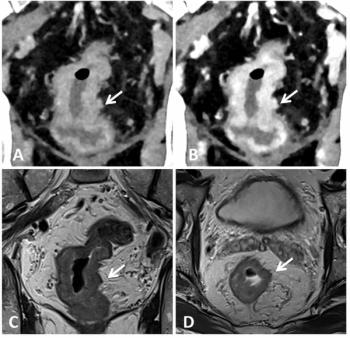
MRI Detects Precursors to Rheumatoid Arthritis
MRI measurements of inflammatory precursors to rheumatoid arthritis are central to the early application of a promising anti-arthritis therapy, according to a study published in the British Medical Journal.
MRI measurements of inflammatory precursors to rheumatoid arthritis are central to the early application of a promising anti-arthritis therapy, according to
A British-led international team studying the effectiveness of the immunosuppressant golimumab (trade name Simponi) found
While X-ray studies remain the standard for assessing destructive skeletal changes in patients with rheumatoid arthritis, they are “inherently limited by the lack of ability to assess pre-erosive changes that precede damage to the osseous component of the joint, a stage of disease that had been thought to be irreversible,” Philip G Conaghan, MD, PhD, of the University of Leeds, and colleagues wrote.
The team reviewed results in the GO-FORWARD study of golimumab in the treatment of patients with established rheumatoid arthritis, which included an MRI substudy. In the study, 444 patients were randomly assigned to groups taking combinations of golimumab, methotrexate (MTX), and placebo; 240 of the patients were also enrolled in the MRI substudy.
Golimumab plus MTX significantly improved MRI-detected synovitis and osteitis (prognosticators of future structural damage) versus placebo plus MTX at weeks 12 and 24, the researchers found. They added that “MRI allows measurement of inflammatory lesions such as osteitis and synovitis, as well as erosions, and thus is an important tool for objectively evaluating the effect of newer compounds on disease activity in future clinical trials enrolling patient populations with relatively lower disease activity.”
Newsletter
Stay at the forefront of radiology with the Diagnostic Imaging newsletter, delivering the latest news, clinical insights, and imaging advancements for today’s radiologists.




























